Kalmar Castle is an imposing structure that feels both historic and fairytale-like as it stands on the waterfront with its walls and towers. Perhaps it's not surprising that the castle's website promotes it as 'a real castle'.
Innehållsförteckning
Kalmar Castle
Despite its 800-year history, Kalmar Castle is well-preserved and still exceptionally beautiful. It is very interesting to visit the interior of the castle and to hear about its history, but it is also cosy to enjoy the lovely surroundings of the park.
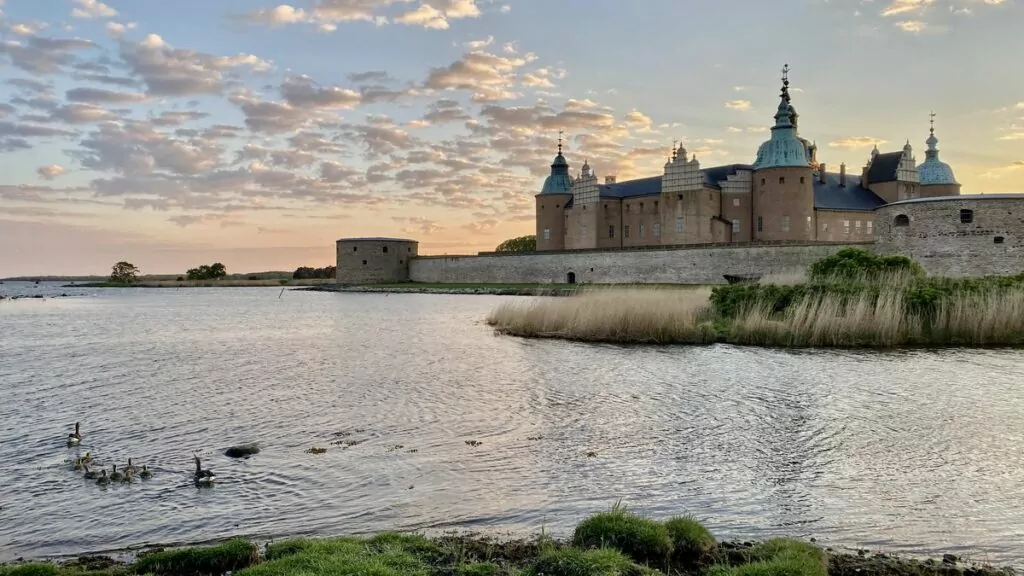
We were here on a beautiful summer day and appreciated the peaceful holiday atmosphere, both during the day and in the evening.
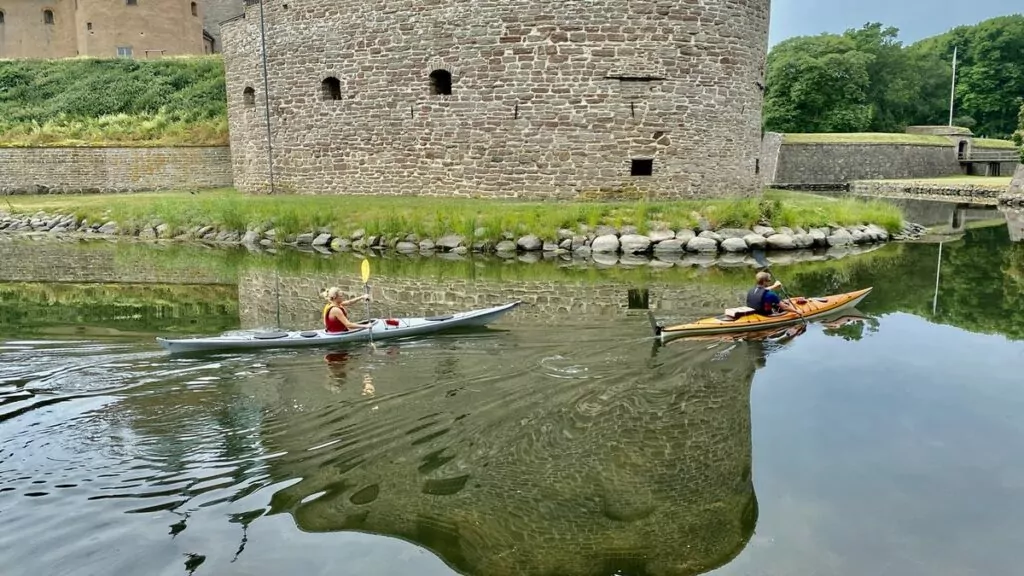
Kalmar Castle is located on Slottsholmen on Slottsfjärden, the site of the medieval Kalmar harbour.
800 years of history - Kalmar Union, Renaissance Palace, Kalmar War
The history of Kalmar Castle began at the end of the 12th century with the construction of a so-called kastal, or defence tower. At the end of the 13th century, Magnus Ladulås built a ring wall around the tower.
The need for a castle at this location was not surprising. The border with enemy Denmark was only a few kilometres to the south. The castle was equipped as Sweden's most modern fortress, and in the 14th century the building was further developed.
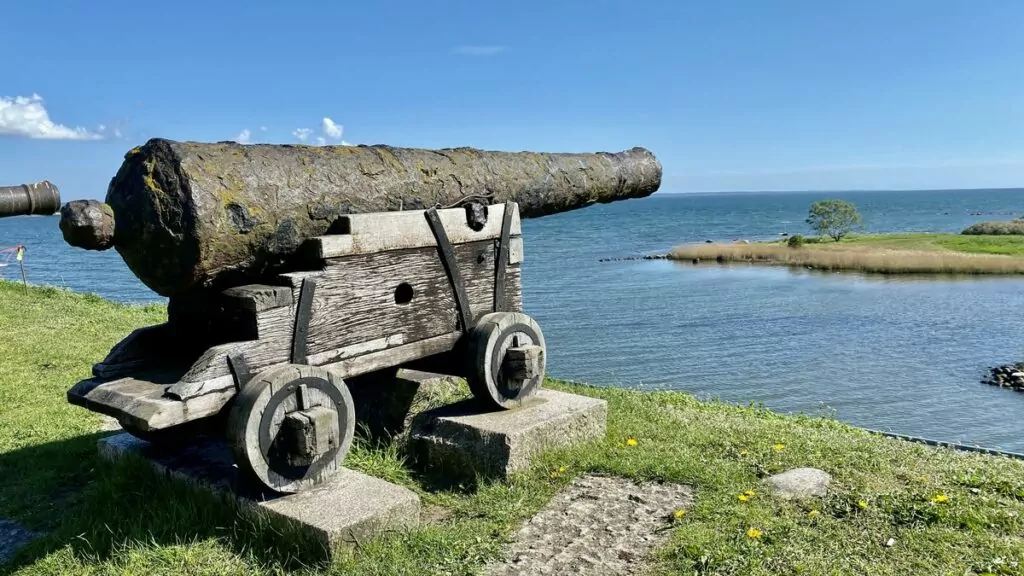
In 1397, the castle was at the centre of a very important event. It was here that the Kalmar Union was formed between Sweden, Norway and Denmark, headed by Queen Margaret.
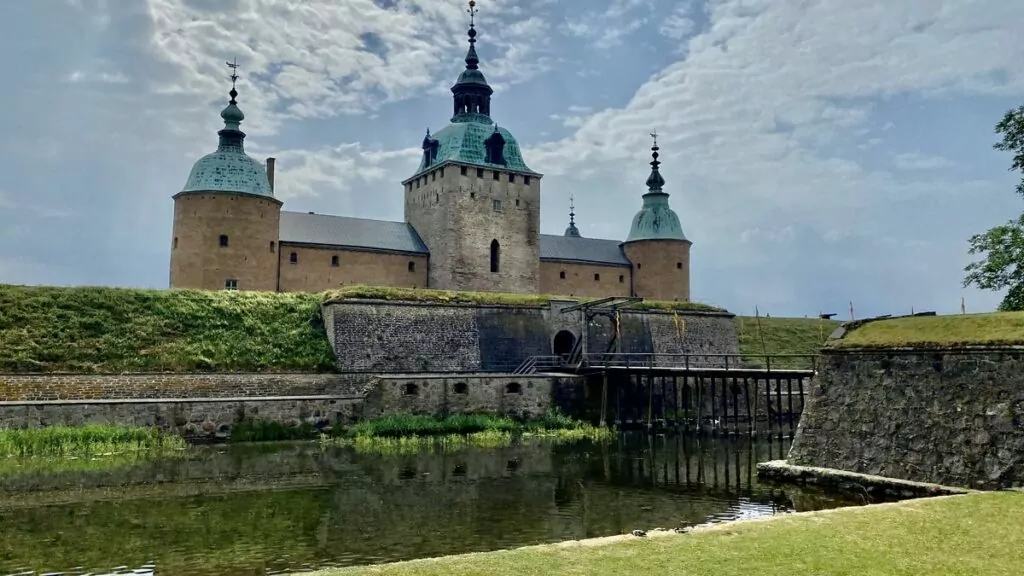
In the 16th century, when Gustav Vasa was king, the Kalmar Union came to an end. During this century, the castle was also remodelled into a beautiful Renaissance palace, with round corner towers and beautifully decorated halls.
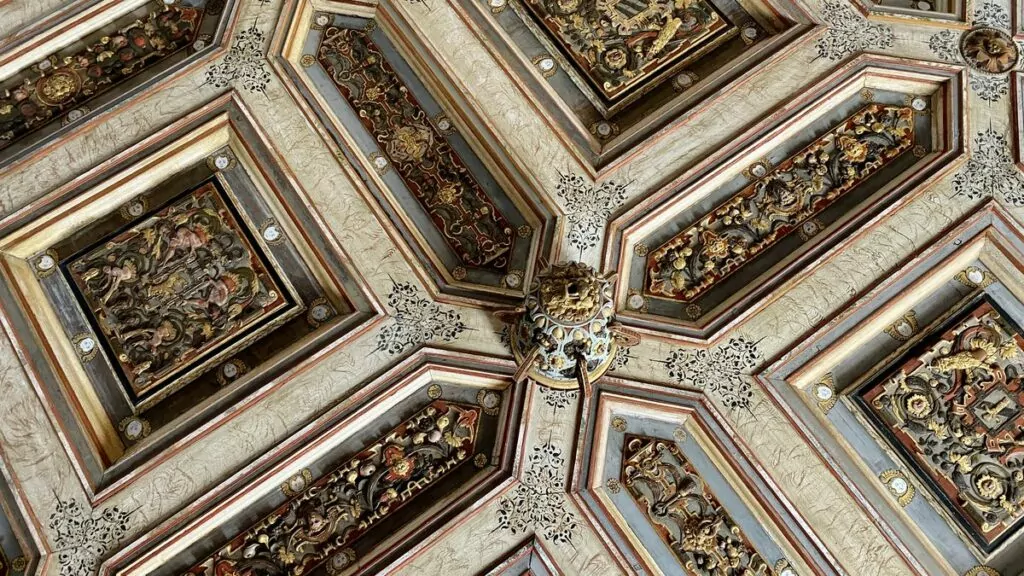
In the early 17th century, Kalmar Castle was captured by a Danish army, but only a few years later it was taken back by the Swedes. After the Peace of Roskilde, the castle ceased to be a border protection against Denmark, and thus lost its role as a defence castle.
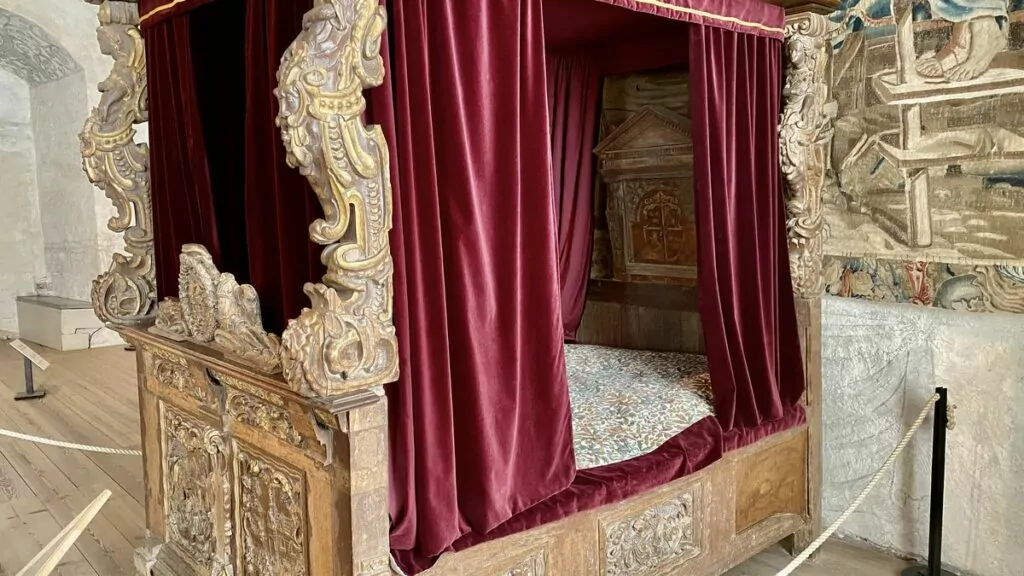
In the 18th century, the castle was used as a prison and as a Crown distillery, and it gradually fell into disrepair. Today the castle has been refurbished and is a very popular destination.
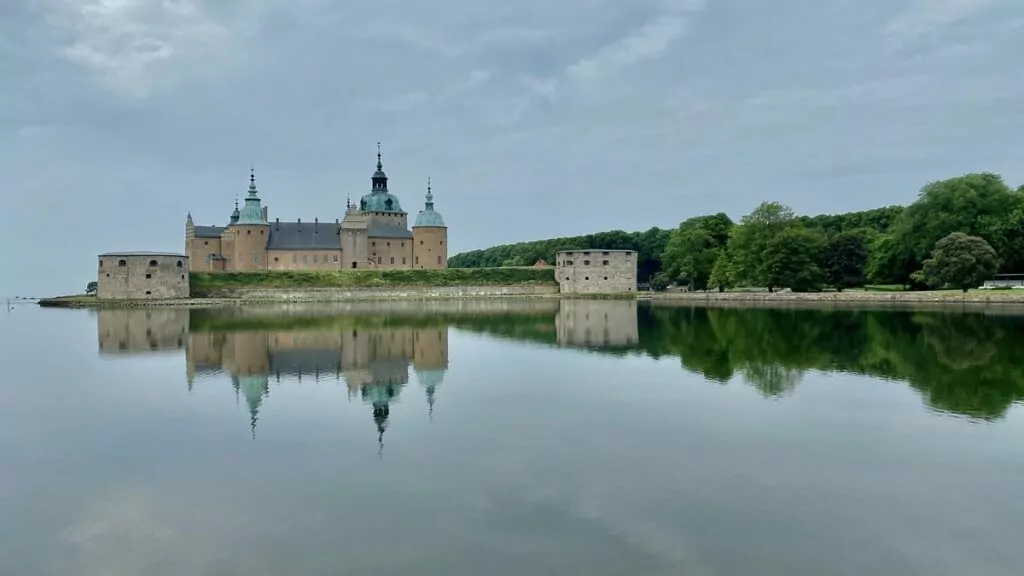
Visiting Kalmar Castle
If you are in Kalmar, you should not miss visiting the castle. Under normal circumstances, the castle is open most of the year, but with varying opening hours and prices. During the high season, when "VasaLeken" is open, you have to pay an entrance fee for the entire castle, but at other times you can roam freely around the courtyard and ramparts.
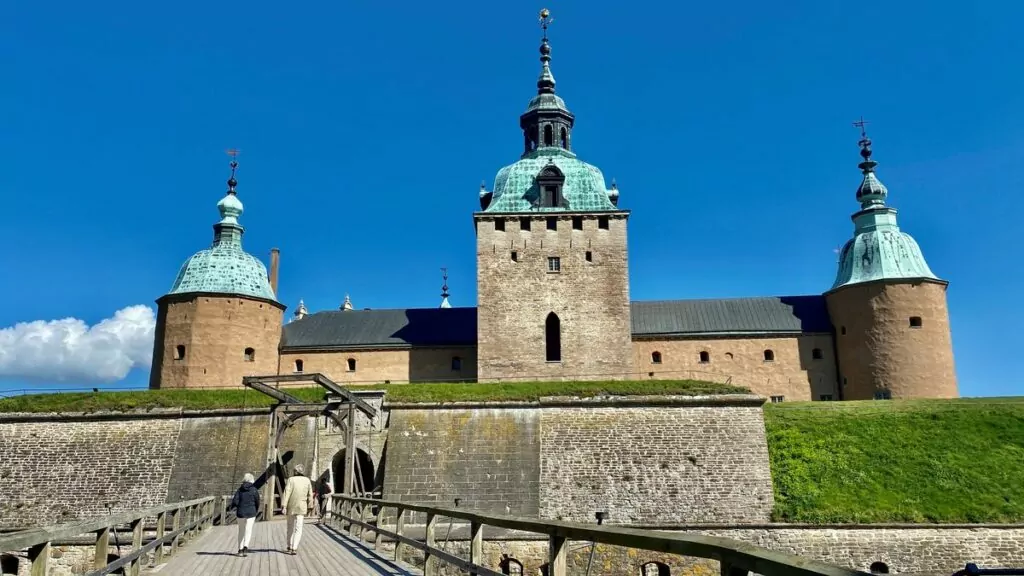
From the courtyard you can then go further into the castle.
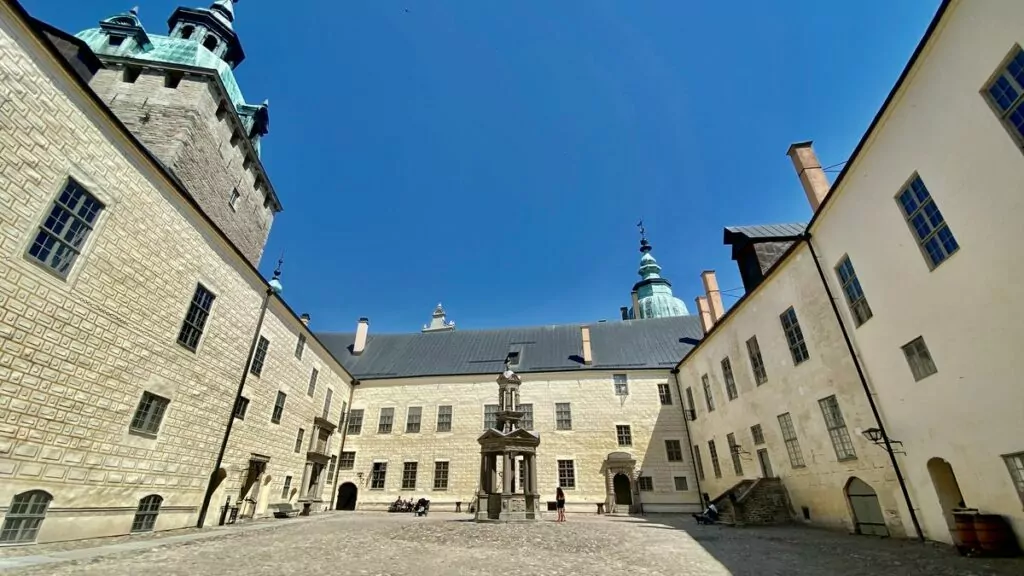
Usually, guided tours are organised several times a day and are included in the entrance fee. When we were here, the guided tours had not yet started, due to the pandemic, so we wandered around on our own. And this really is an amazing castle to stroll around in. What beautiful and magnificent rooms!
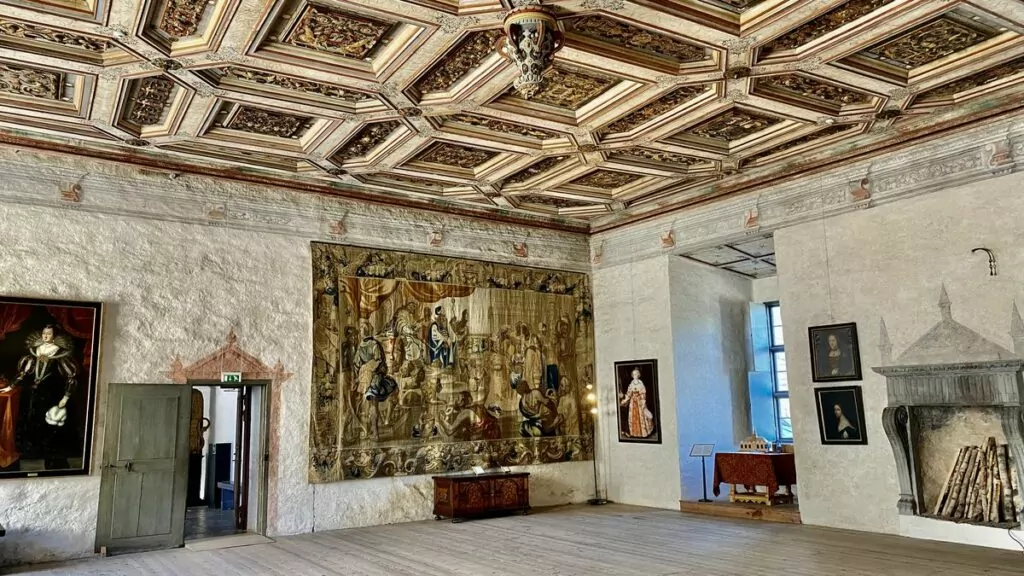
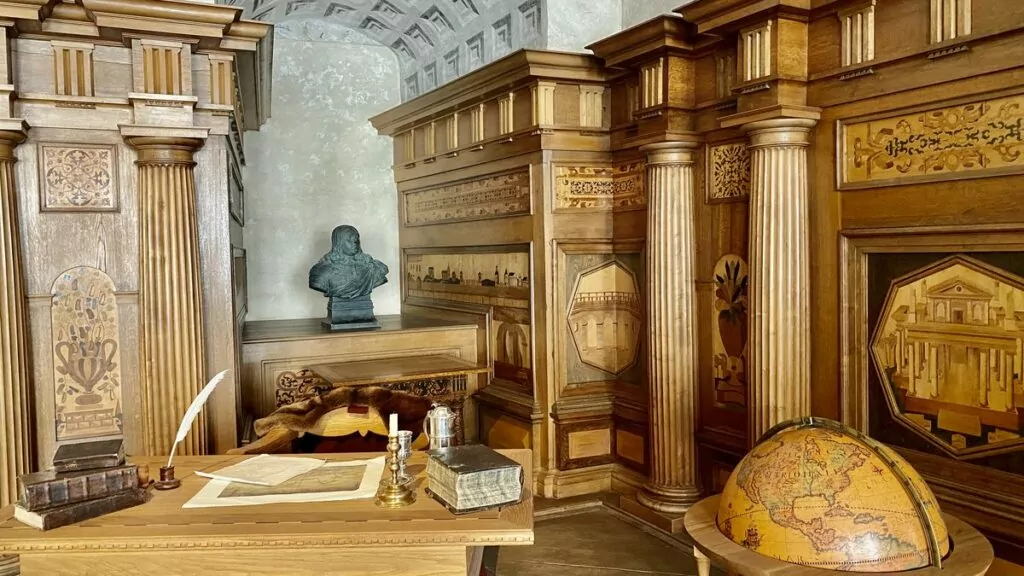
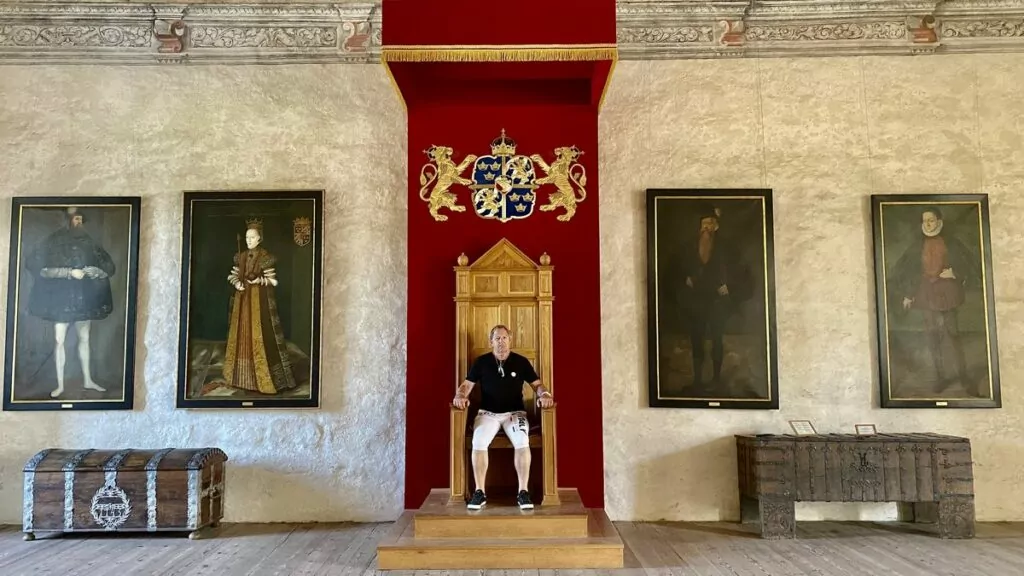
Kalmar Castle Church
Inside Kalmar Castle you will find Kalmar Castle Church. The church was built by Johan III at the end of the 16th century, and received its permanent interior during the 17th century. Charles X Gustav had planned to marry here, but when the plague broke out, the wedding had to be postponed and moved to Stockholm. Today, Kalmar Castle Church is one of Sweden's most popular wedding churches. Baptisms and concerts are also organised here.
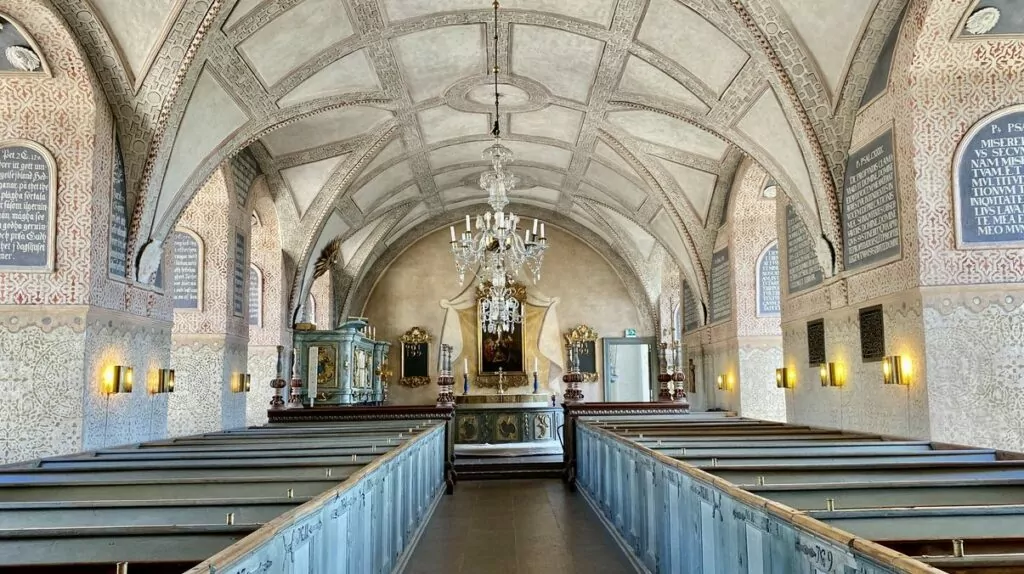
Exhibitions at Kalmar Castle
There are a number of different exhibitions at Kalmar Castle. Some are permanent and tell the history of the castle. Others are temporary and have different themes.
800 years at the castle tells the 800-year history of Kalmar Castle. This is a good place to start to get an idea of what has happened throughout history.
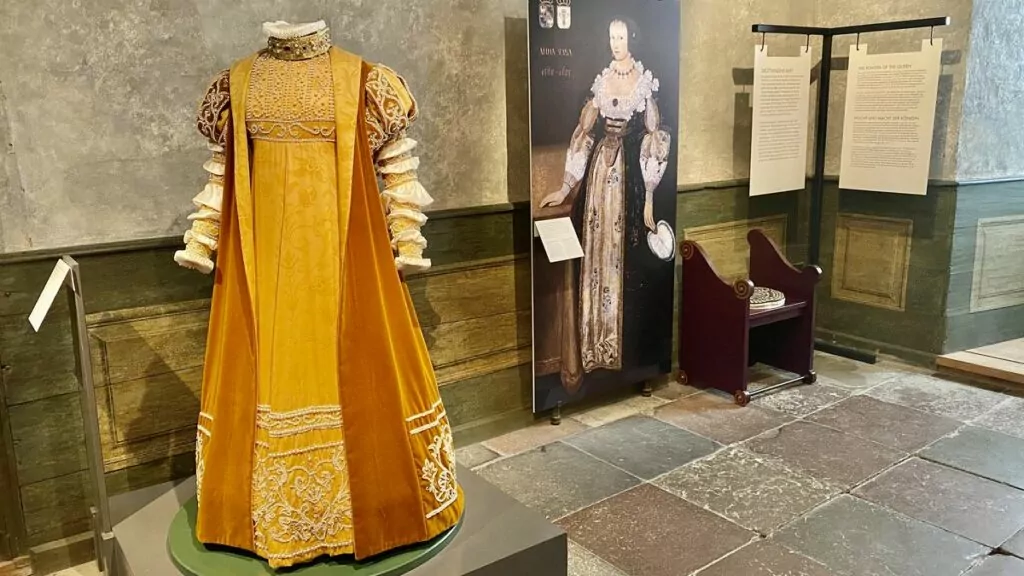
John 111: Easter meal welcomes, in the Grey Hall, to a table set at Easter 1586. The meal is a reconstruction of the German traveller Samuel Kiechel's diary entries and preserved shopping lists and menus from the 16th century. Among other things, we learn that pies were sometimes filled with live birds - so that they could flutter away during the meal to the delight of the guests!
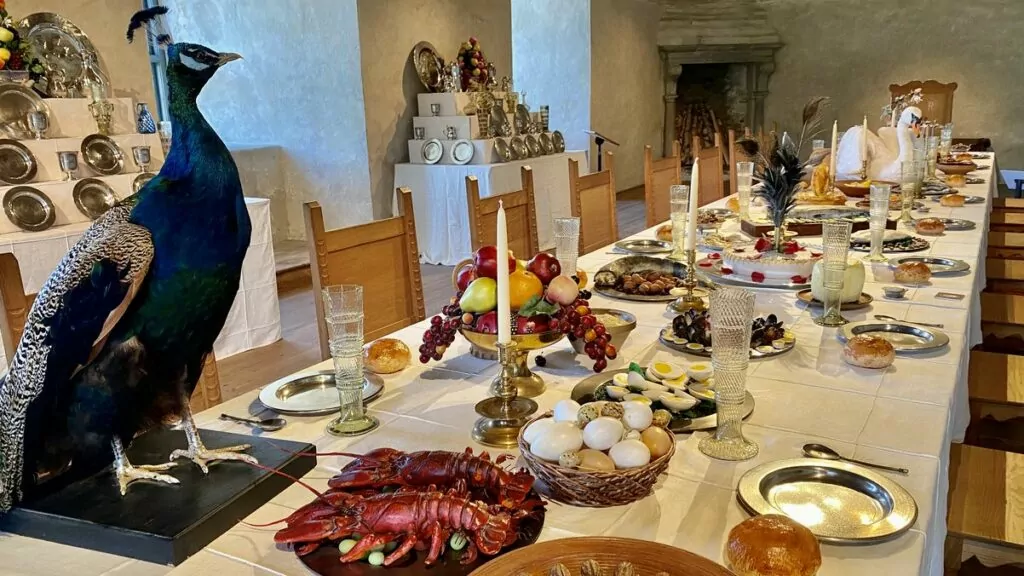
The Agda Chamber is a small room located right next to the Golden Hall. It may have been here that Duke Erik's favourite mistress Agda Persdotter lived during her time at Kalmar Castle. The room is decorated as it might have looked, with reconstructions of existing Renaissance furniture.
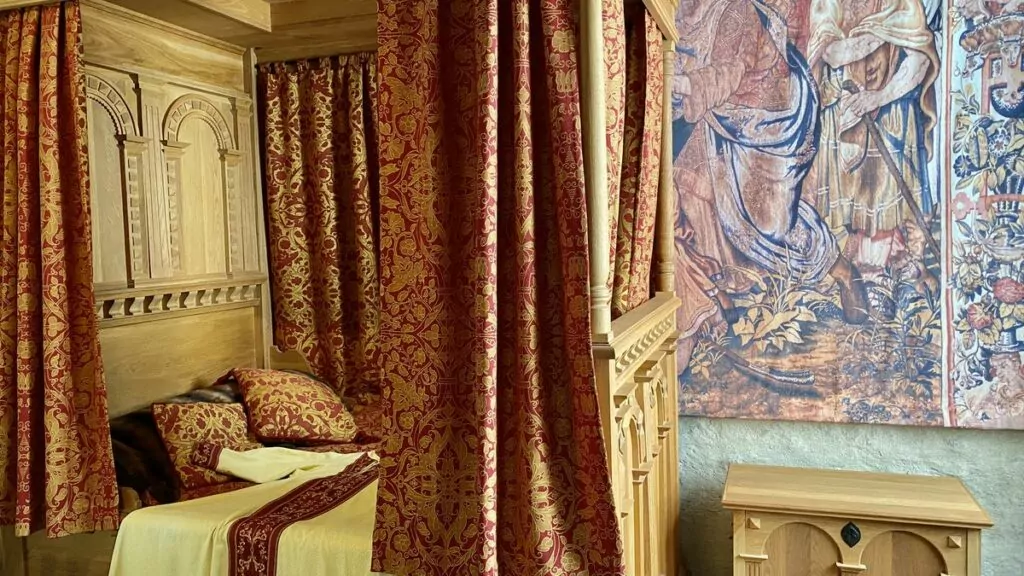
Kalmar Castle's hidden treasures is displayed on the ground floor of the Spa Tower. Here you can see finds made in the castle grounds.
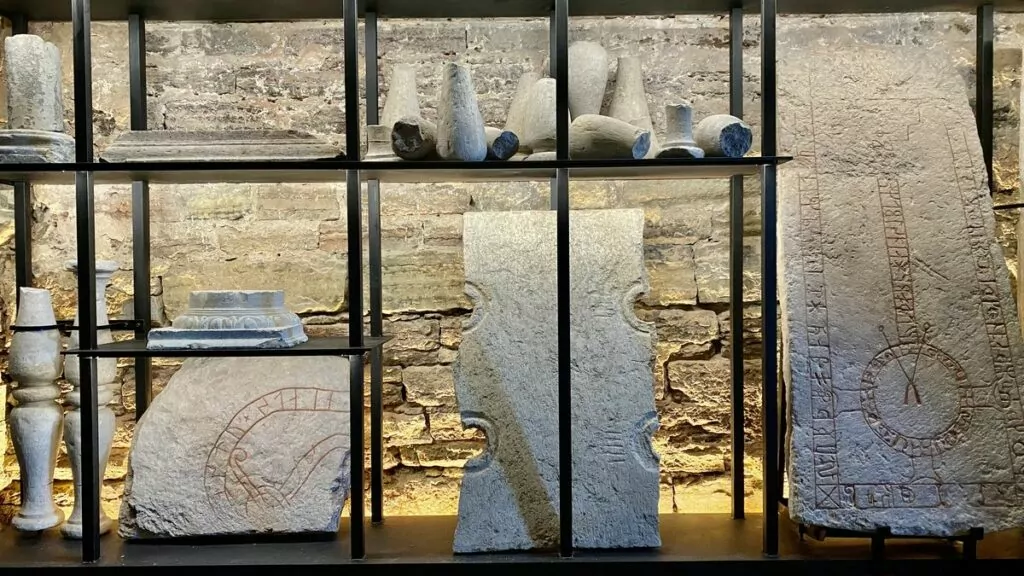
Women's prison is by far the most unpleasant exhibition. The furnishings are original to the early years of the 19th century, and a pictorial exhibition tells of all the different horrible punishments that could be meted out.
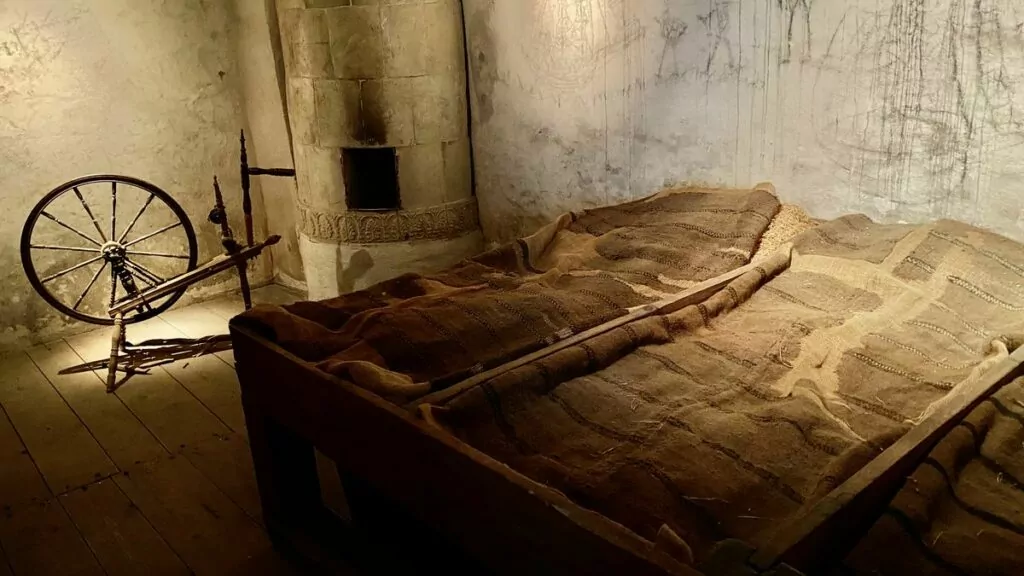
Temporary exhibitions varies, of course. When we were here, "Behind the Horizon" was on display, showcasing the enchanted world of photographic artist Erik Johansson (until 7 November 2021). This exhibition is really delicious, and we already saw it when it was on display at Museum of Photography in Stockholm.
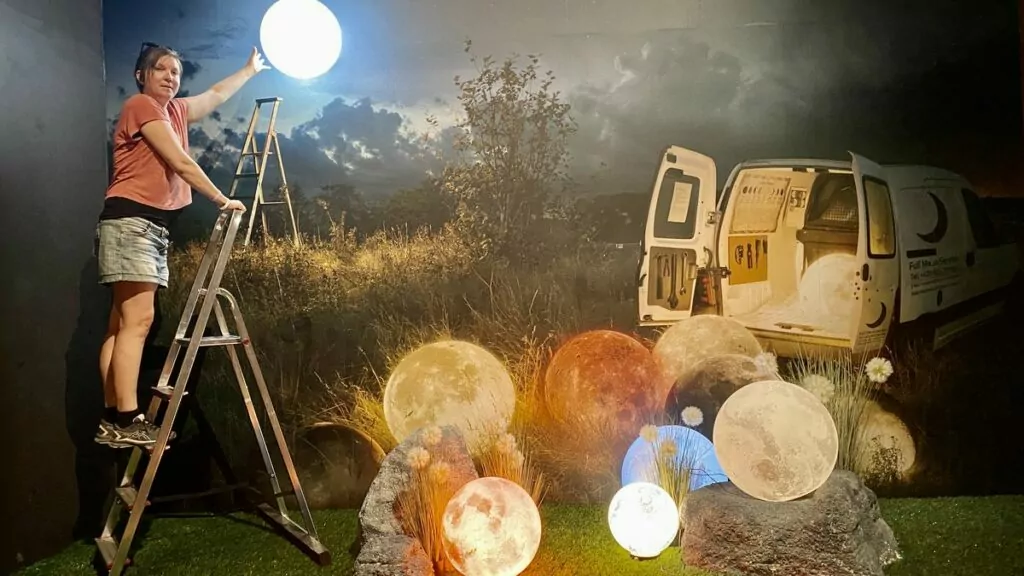
Where can you stay or park your motorhome?
There are of course plenty of different hotels and other accommodation options in Kalmar. For those travelling with a motorhome, there are also a few options. We chose the caravan park at Ölandskajen, as it has a good location and there is electricity and a service building with toilets and showers here. You pay at the tourist office, which is right next door, or with Swisch. During the summer months you can also stand on the Elevator Quay, but without electricity.
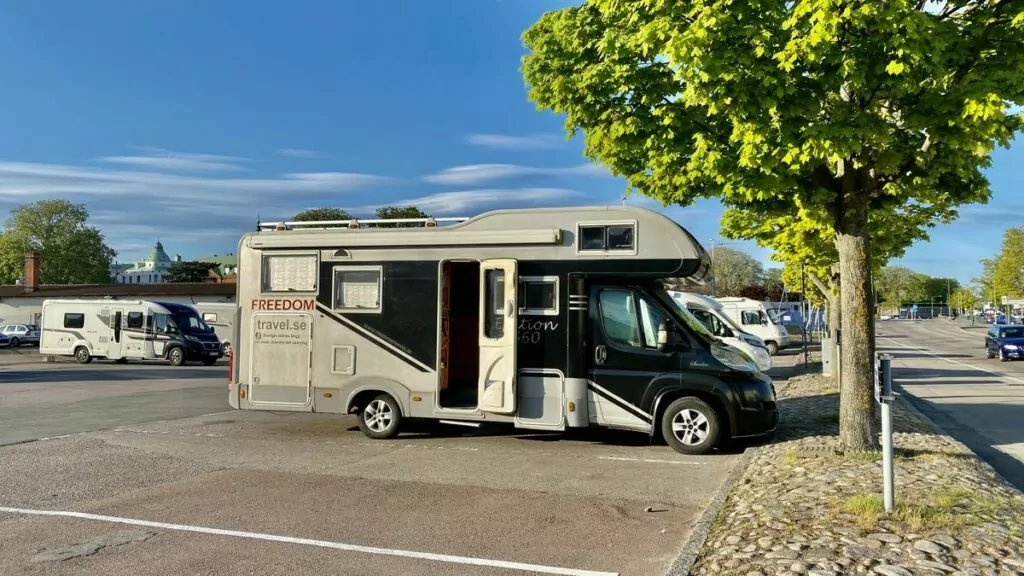
See more in the neighbourhood
There is much to see and experience in squid. Just outside Kalmar Castle you'll find the lovely city park and it's also close by if you want to explore the old town or have a coffee at the cosy Krusenstiernska gården. You won't want to miss Kvarnholmen, and we can also recommend a visit to the interesting Kalmar County Museum. In addition, it is close to the beautiful and lovely Öland!
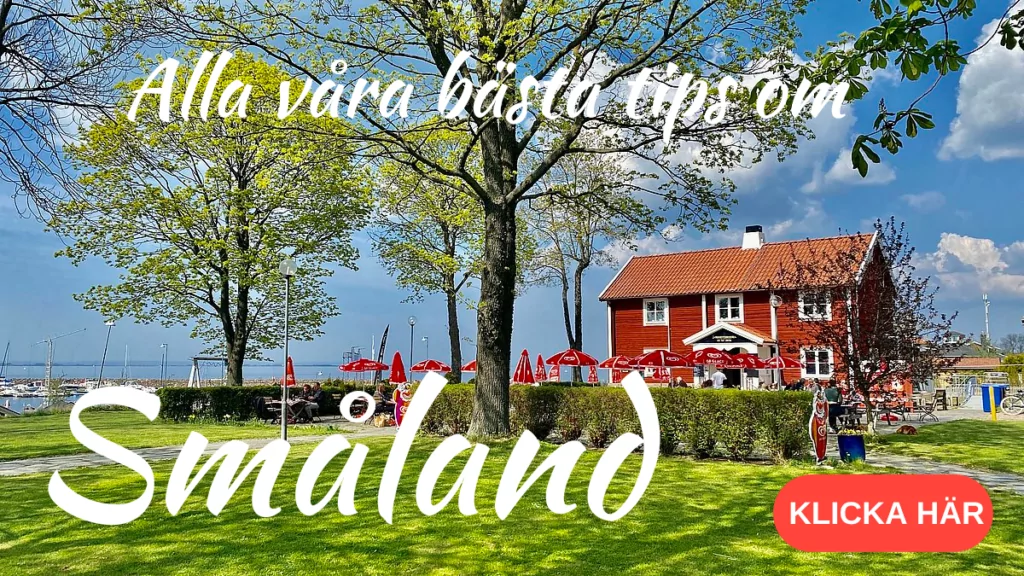
The emigrant village in Småland - in the footsteps of Vilhelm Moberg
The Utvandrarbygden in Småland is the area that many Swedes left to emigrate to...
Things to do in Glasriket - 25 tips for sights and experiences
What to see and do in Glasriket in Småland? We have travelled around...
Lysingsbadets camping - Västervik Resort in Västervik
We have now travelled to Lysingsbadets camping, which is located just outside Västervik. This...
Blowing glass - try it at the Kosta Glass Centre
Want to try blowing glass? At the Kosta Glass Centre you can create your own...
Europe's longest zipline - Sweden Zipline in Småland.
Europe's longest zipline course is in Sweden, deep in the forests of Småland. Of course...
Lessebo hand-paper mill - try making paper
Lessebo handmade paper mill in Småland is something so special as a still-functioning mill where the...
Kalmar läns museum - about the regal ship Kronan
Kalmar County Museum offers a very exciting exhibition about the regal ship Kronan, which sank in...
Swedish Smålandsvägen - FREEDOMtravel Themed roads
The Swedish Småland Road is a themed road that takes you through beautiful Småland,...
Kosta Christmas market - a wonderful Christmas atmosphere in the Kingdom of Crystal.
Kosta Christmas Market is part of the Christmas celebrations in Kosta, in the Kingdom of Glass. Here you can experience ...
What to do on Visingsö - 12 tips for Vättern's largest island
What can you do on Visingsö? First of all, you can take it easy and...
The Kyrkö bog car cemetery - a different kind of attraction
The Kyrkö mosse car cemetery outside Ryd in Tingsryd municipality is an unusual sight, to say the least. My ...
Ödevata farm hotel and caravan park - sustainable in Småland
Ödevata gårdshotell in Småland is a cosy, simple and natural hotel, where you are also...
IKEA Museum in Älmhult - fascinating about a department store
The IKEA Museum tells the story of the huge furniture store founded in 1943, as a mail order company, by...
Vidinge gård och ställplats - dog-friendly accommodation in Småland, Sweden
Vidinge Farm is a dog-friendly accommodation in Småland, a camping site, a fishing centre and a starting point for...
What to do in Jönköping - 17 tips for the matchstick city
What to do in Jönköping? The city is famous for its matchstick history and you should...
James Bond museum in Småland - the world's only Bond museum
James Bond Museum in Småland - why is it here and can it really be...
Kosta Art Gallery - exciting art in the Glass Kingdom
Kosta Art Gallery is an art gallery in the Glasriket region of Småland, showcasing glass art by...
What to do in Eksjö - 11 tips for the wooden city in Småland
What to do in Eksjö? This town in Småland, often referred to as 'the unique wooden town'...
Husqvarna museum - and more to do in Huskvarna
The Husqvarna Museum in Huskvarna tells the story of a company that started making rifles in the 17th century....
Granhult church in Småland - Sweden's oldest wooden church
Granhult Church in Småland is Sweden's oldest wooden church. This fine little wooden church, dating from the 1220s, survived...
Gamleby camping - Kustcamp Gamleby
Now we have arrived at Gamleby camping, not far from Västervik. The campsite is large...
Teleborg Castle in Växjö - a fairytale castle in Småland
Teleborg Castle is a beautiful fairytale castle just outside Växjö. Here you can enjoy the...
Tättö Havsbad - nice campsite by the sea
Yesterday we ended up at a campsite at Tättö Havsbad, in Loftahammar north of Västervik. We...
Huseby mill in Småland - a well-preserved time bubble
Huseby Bruk is a great place to visit in Småland with old mill environments, castle, park, restaurant, shops and...
Trolls in Gamleby - Friends of the Garpe Sculpture Park
Trollen i Gamleby, or Friends of Garpe Sculpture Park, is a different kind of sculpture park in Västervik....
The Matchstick Museum in Jönköping - an engaging story
The Matchstick Museum in Jönköping tells the story of a time of child labour and terrible working conditions, but also of...
Things to do in Växjö - 15 tips for sights and experiences
What to see and do in Växjö? Växjö is a pleasant city that offers...
Mönsterås by campervan - festival and camping site
In Mönsterås, between Oskarshamn and Kalmar, we were greeted by a blues festival, long-haired guys in leather clothes, pick-up trucks,...
Things to do in Kalmar - 17 tips for experiences and attractions
What to do in Kalmar? Well, we'll tell you! Kalmar is a...
Kronoberg castle ruins in Växjö - Vasa and the Dacke feud
Kronoberg Castle Ruin is a well-preserved historical ruin that tells interesting stories about Gustav Vasa and...
What to do in Gränna - 9 tips for the candy cane town at Lake Vättern
What can you do in Gränna? Many would probably answer "eat candy canes" and that's...
Have you visited Kalmar Castle? How was your experience? Do you have any other tips on nice places to visit in the neighbourhood?
Facts about Kalmar Castle
- Municipality: squid
- County: Kalmar County
- Landscape: Småland
- Style: Renaissance
- Material: Stone and brick
- Established: 12th century
- Owners: State Property Agency
- Read more: You can find more information at the castle's website.
Services and practical information
- Opening hours: In 2021, the castle will be open daily from 28 June to 7 November, and then on weekends. See the castle's website for current and exact opening hours.
- Prices: Adults 110-155 SEK depending on the season, pensioners 95-135 SEK, students 70-95 SEK, children/youth 50-95 SEK, children 3-5 years 0-95 SEK (2021).
- Shop: The castle shop offers gifts, Swedish and Danish design and more.
- Food service: The castle restaurant offers lunch and coffee, among other things.
- Rules: Smoking is not permitted in the castle or on Slottsholmen. It is not permitted to bring prams indoors. Dogs are not allowed indoors, with the exception of guide dogs.
Tours and activities
- Guided tours: Guided tours are often given daily, and are included in the entrance fee. The tours have different themes such as Kalmar Castle in 30 minutes, The King's Kitchen or The Towers of Kalmar Castle.
- Exhibitions: The castle hosts both permanent exhibitions on the history of the castle and temporary exhibitions on different themes.
- Activities for children: VasaLeken (play environments in the castle area), Räkna med Vasa (number hunt), Bildbingo, Children's Sunday and more.
- Events: Borggården Live (various artists), lectures, music events and more according to the calendar.
- Conference: Conferences can be organised at the castle, possibly in combination with historical experiences.
Accessibility
- Parking: Parking for people with disabilities is available at the end of the castle avenue. The distance to the castle area is about 100 metres.
- Indoor environment: All public areas of Kalmar Castle are not accessible to visitors with disabilities. Wheelchair-bound visitors pay half price for admission due to limited accessibility. As part of the "Worthy Entrance" project, the accessibility of Kalmar Castle has been expanded with a lift to make the Green Hall, the Castle Church, Borgstugan, Sturesalen and Gyllene Salen accessible.
- Toilet: An accessible toilet is located in the outer courtyard.
- Companion/assistant: Companions or assistants always have free entry to the castle. Guide dogs are welcome.
- Hearing loop: The Green Hall (concert and conference hall) has a hearing loop.
History at Kalmar Castle
- 1180: Around this time, a defence tower (kastal) was built on Slottsholmen, which was already populated. The tower served as a defence against pirates and other enemies.
13th to 14th century
- End of 13th century: Magnus Ladulås built a castle with a ring wall and tower around the old castle. The border with Denmark was a few kilometres to the south.
- 1337: Magnus Eriksson had the castle significantly remodelled and extended.
- 1397: The castle was at the centre of the formation of the Kalmar Union between Sweden, Norway and Denmark, created by Queen Margaret.
16th century
- 1523: With Gustav Vasa as king, the Kalmar Union ended.
- 16th century: Under the Vasa kings Gustav I, Erik XIV and Johan III, the medieval castle was transformed into a Renaissance palace based on European models.
- 1535: Under the direction of Henrik von Cöllen, the castle got its round corner towers.
- 1557-1560: Kalmar Castle was the residence of Erik XIV, during his time as Duke of Kalmar and Kronoberg County. Much work was done on the castle's interiors.
- 1589-1592: The castle church was added.
17th century
- 1611: Kalmar was taken by a Danish army during the Kalmar War, and Christer Somme surrendered. The castle became Danish property.
- 1613: Kalmar Castle was returned to Sweden.
- 1658: After the Peace of Roskilde, Kalmar Castle ceased to be a border protection against Denmark, and thus lost its role as a defence castle.
- End of the 17th century: The castle ceased to be a royal castle and a long period of decay began.
18th century to the present
- 1766: It was decided to renovate the dilapidated castle, but now much of the building was rotten.
- 18th century: The castle became a Crown distillery, and parts of the castle were also used as a prison.
- 1850s: The renovation of Kalmar Castle began.
- 1852: The prisoners were removed from the castle.

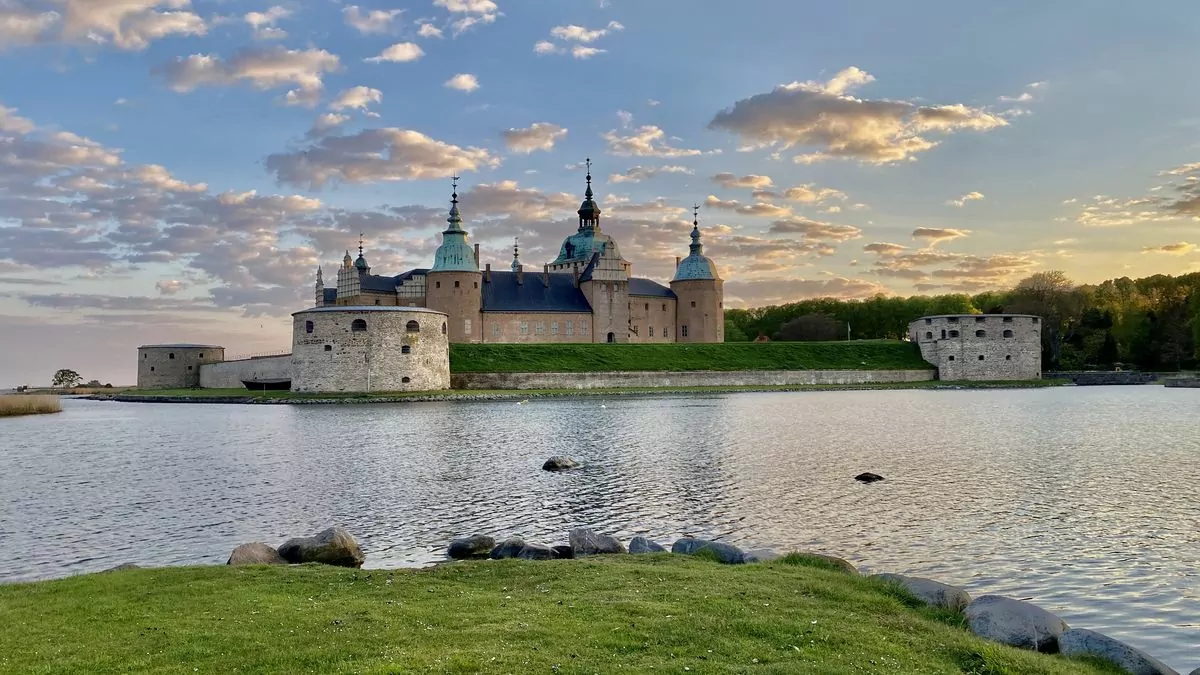
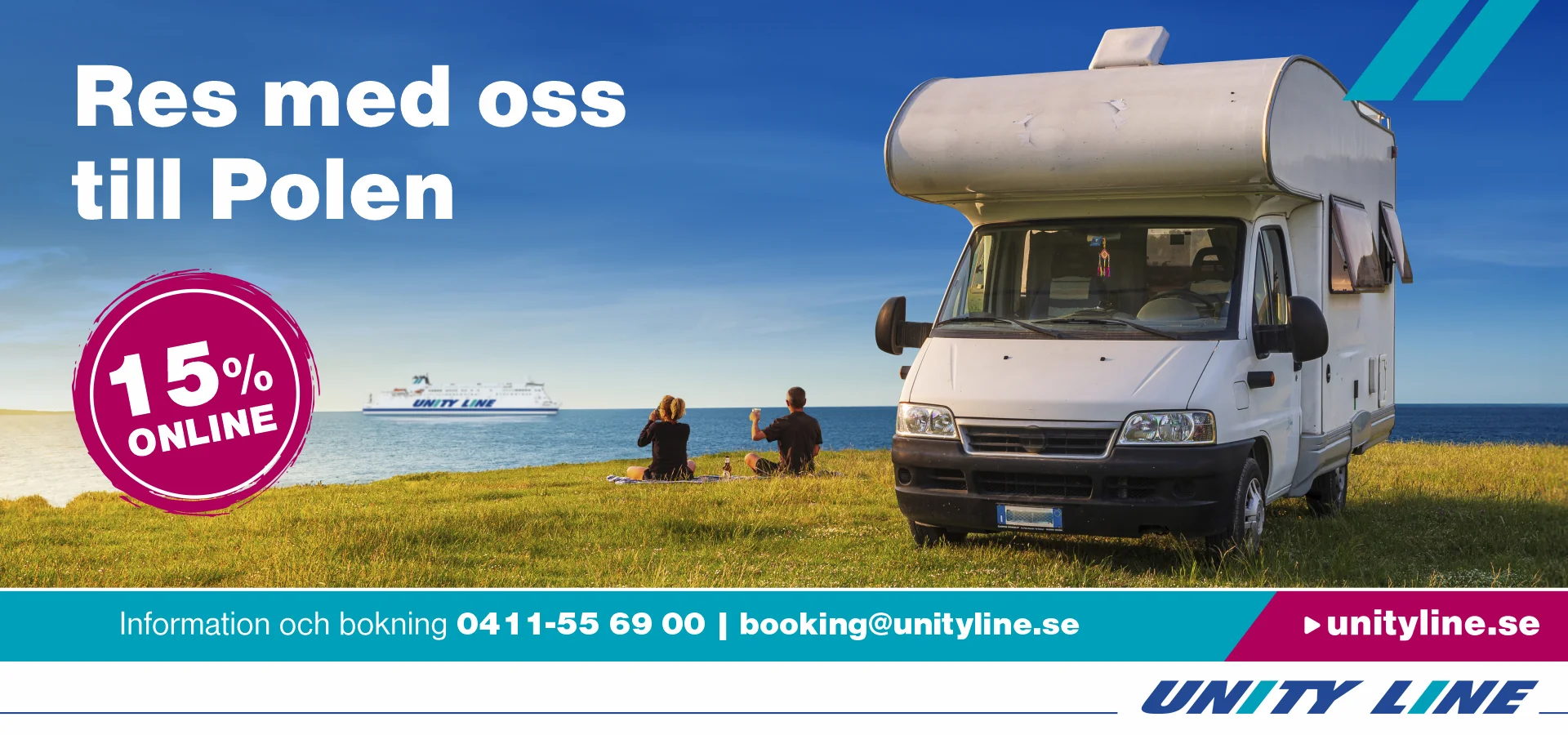






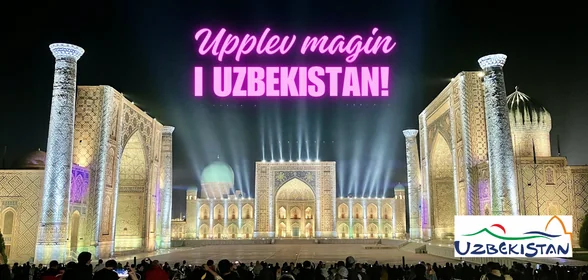

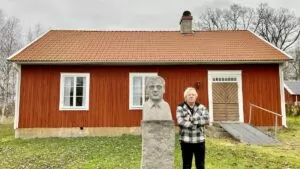
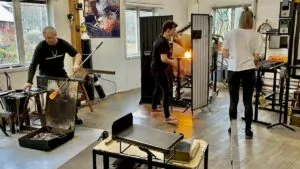
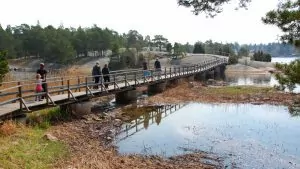
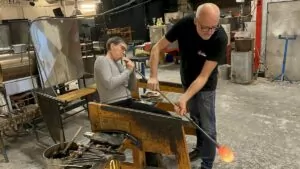

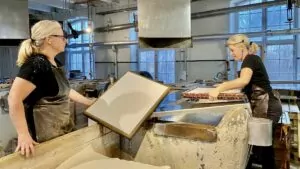
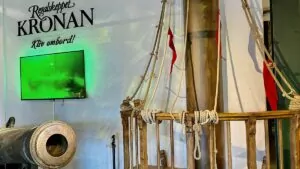
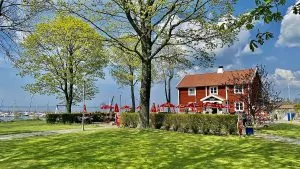
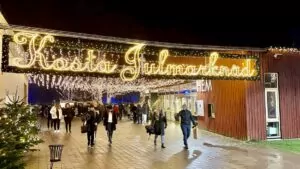
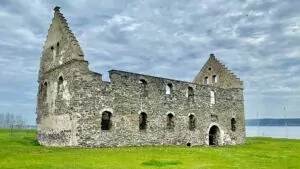
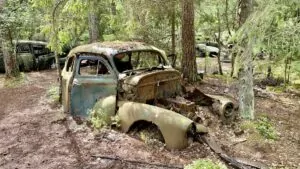
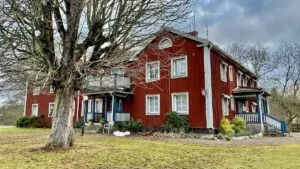
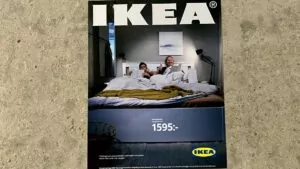
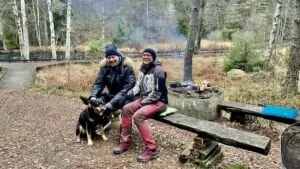
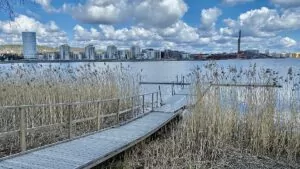

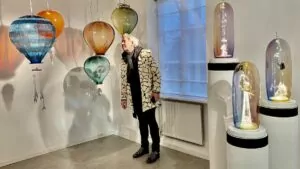
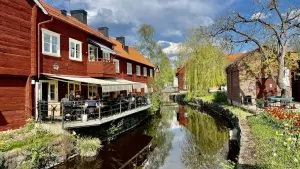
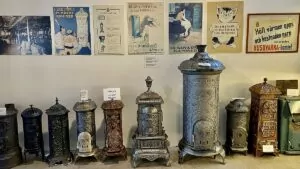
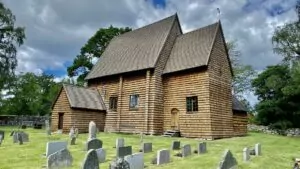
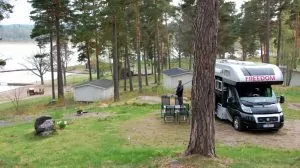
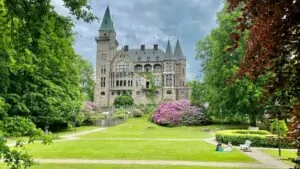
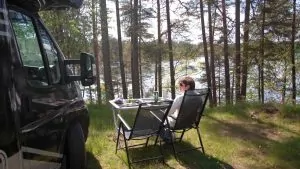
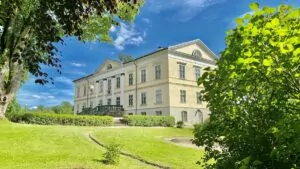
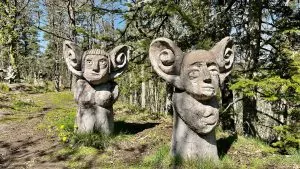
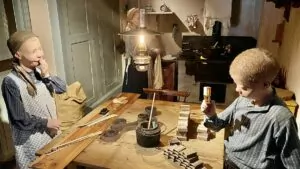
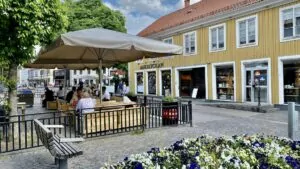
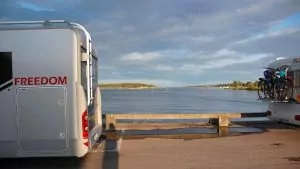
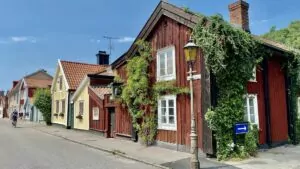
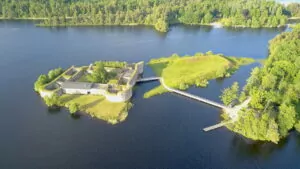
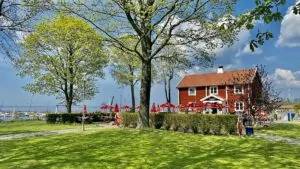
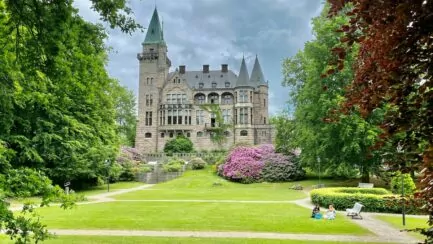
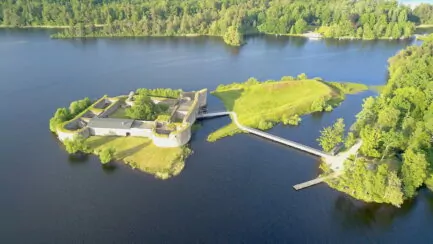
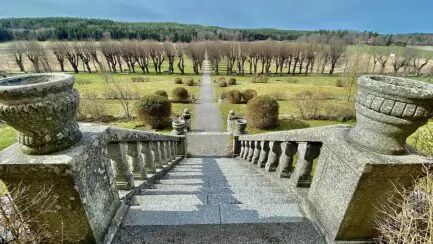
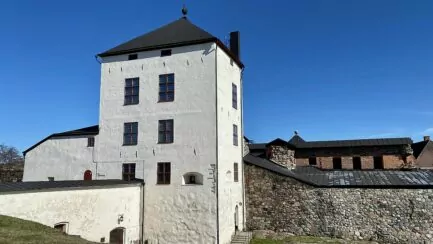
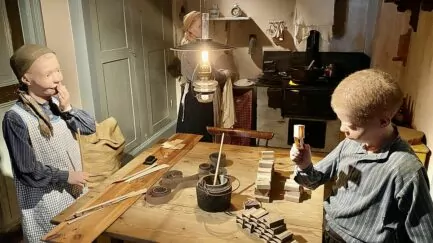
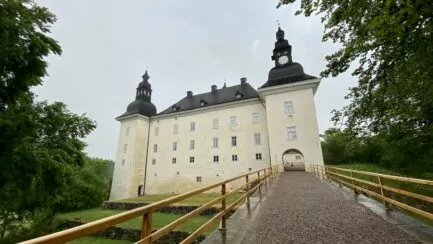



Ama de casa says:
Kalmar Castle is really both magnificent and beautiful. We were at a wedding in the castle church when Anders' little sister Tina said yes to her Jacob. Yes, he also said yes of course 🙂 A very fancy and atmospheric wedding.
13 July 2021 - 9:45
Helena says:
But oh so nice with weddings here! And what luck that it was yes 🙂
13 July 2021 - 19:04
Daniel på FlyingDryden says:
Remember Sweden's longest bench is located opposite the castle, along the wall to the cemetery. 222 metres are not to be trifled with! 😉
13 July 2021 - 11:47
Helena says:
Yes! Of course we saw it! We had just read a post about it, so of course we wanted to look it up 😉.
13 July 2021 - 19:05
Lena+i+Wales+och+Spanien says:
A nice post, very much in my style.
As you know, I love history and over the past year I have listened to many podcasts about the Kalmar Union and Vasa. Good rehearsal.
Take care!
13 July 2021 - 12:22
Helena says:
Glad it was appreciated! An interesting historical period!
13 July 2021 - 19:06
bmlarsreseblogg says:
We were on our way to Kalmar Slott, 2018, we think when there was a world exhibition about Leonardo sa Vinci. Unfortunately, we did not get there and we have never visited the castle, even though we have passed by so many times on our way to Öland.
13 July 2021 - 15:38
Helena says:
Wow, that sounded like an exciting exhibition! But, the castle is worth a visit regardless, definitely! Nice to have things left to look forward to 🙂.
13 July 2021 - 19:07
BP says:
Agreed, that's a "real" castle, just like Örebro Castle, though not as nice as the one in Kalmar.
13 July 2021 - 19:59